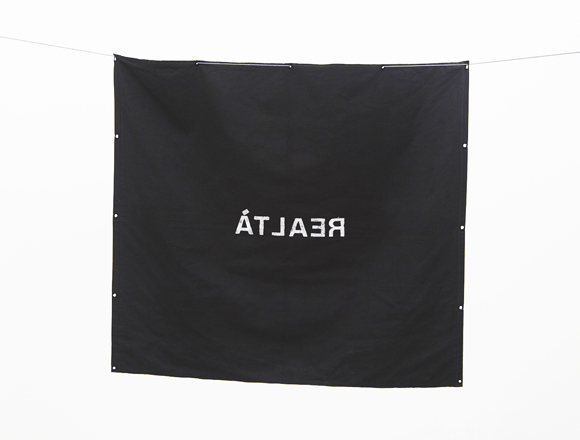11 September–9 November 2013
Galeria Nara Roesler
Av. Europa, 655, São Paulo, SP
01449-001 Brazil
Hours: Monday–Friday 10am–7pm;
Saturday 11am–3pm
T +55 11 3063 2344
info@nararoesler.com.br
Curated by Moacir dos Anjos
Artists: Antonio Dias, Armando Queiroz, Berna Reale, Cildo Meireles, Claudia Andujar, João Castilho, José Rufino, Marcos Chaves, Paula Trope, Paulo Bruscky, Paulo Nazareth, Regina Parra, Rosângela Rennó, Thiago Martins de Melo, Virginia de Medeiros
Cães sem plumas (prólogo) (Dogs without Feathers (prologue)) brings together visual artists from different generations around an expression created by the Brazilian poet João Cabral de Melo Neto. They were brought together, however, not for having created works marked by the poet’s sharp writing, but, like Melo Neto, for their restlessness regarding what they witness in places where they go to or live in. A “dog without feathers,” writes the poet, ”is when a voiceless tree. / Is when from a bird / its roots in the air. / Is when something / gnaws so deep / it gnaws even what is not there”. Cães sem plumas (prólogo) is an exhibition about those who, in Brazil, live on the verge of losing whatever it is that confers them humanity. It expresses the urgent need to address a situation that still exists in this country, and is often brushed aside.
The exhibition does not intend, therefore, to evoke the environment illustrated in Melo Neto’s poetry, much less translate text into images. Rather, it seeks to rescue the idea of a “dog without feathers” to identify, in the production of a set of visual artists, a group of Brazilians whose lives are marked by lack and absence. Communities that are excluded—as a result of disregard or sheer domination—from the benefits brought about to many people by the modernizing transformations the country has undergone in the latest decades in the fields of technology, macroeconomic management, and even citizenship and social protection. People who live in the margin of almost everything others have achieved in Brazil, and to whom there is only forbiddance.
“Dogs without feathers” are most part of the country’s Indigenous peoples, who are oppressed by diseases and by the endless greed for their lands; the mentally ill and the convicts, who are forgotten in failed prison and healing systems; or children and adolescents who live on the streets. “Dogs without feathers” are also those who are forced to leave their land and lose their means of survival; or the many whose rights are disregarded for being black, homosexual or poor.
It is certain that several other existing damages are not referred to in the pieces included in the show, just like several other artists transform these and other damages into more images and shapes, giving social visibility to those who suffer. The aim of the exhibition is not to exhaust the theme, but to raise issues that are still little addressed in Brazilian art circuit, as if they were not worth articulating or, even, as if they did not exist at all.
Cães sem plumas (prólogo) marks the beginning of a more comprehensive and lasting research, even though its major premises are already presented here.
** Excerpts taken from the curatorial text by Moacir dos Anjos, 2013.
About the curator
Moacir dos Anjos is a curator and researcher at Fundação Joaquim Nabuco, where he coordinates the exhibitions program Política de Arte and the ongoing research Cães sem Plumas, which is part of a bigger program titled The Representation of Damage in the Visual Arts. He was director of the Museu de Arte Moderna Aloísio Magalhães, in Recife (2001–2006); curator of the 30th Panorama of Brazilian Art, at the Museu de Arte Moderna de São Paulo (2007); and head curator of the 29th São Paulo Biennial (2010). He is author, among other publications, of Local/Global, Art in Transit (Rio de Janeiro, Zahar, 2005) and ArteBra Crítica, Moacir dos Anjos (Rio de Janeiro, Automática, 2010).
